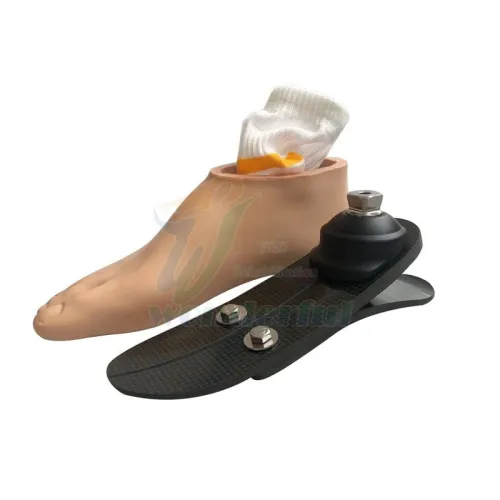Unlocking the Longevity Secrets of Prosthetic Carbon Fiber Feet
In the realm of prosthetics, the Prosthetic Carbon Fiber Foot stands as a remarkable innovation, offering enhanced functionality and durability to individuals seeking a reliable and long-lasting solution for their mobility needs. As technology continues to advance, the question on many minds is: How long does a Prosthetic Carbon Fiber Foot last? In this comprehensive guide, we delve into the intricacies of these cutting-edge prosthetics, exploring the factors influencing their lifespan and the steps individuals can take to ensure optimal durability.

Understanding the Anatomy of Prosthetic Carbon Fiber Feet
Composition and Design
Prosthetic Carbon Fiber Feet are crafted with precision, combining lightweight materials with robust engineering. The fusion of carbon fiber and other advanced materials creates a prosthesis that mirrors the natural biomechanics of human feet. The result is a product that not only enhances mobility but also withstands the rigors of daily use.
Structural Integrity
The design of Prosthetic Carbon Fiber Feet focuses on achieving optimal structural integrity. The strategic placement of reinforcing fibers and the utilization of high-strength resins contribute to the prosthesis's ability to endure varying levels of stress and pressure. This ensures a prolonged lifespan, making it a reliable choice for individuals with active lifestyles.
Factors Influencing the Lifespan
User Lifestyle
The longevity of a Prosthetic Carbon Fiber Foot is closely tied to the user's lifestyle. Individuals with more active routines may experience slightly shorter lifespans due to increased wear and tear. However, these carbon fiber prosthetics are designed to withstand a wide range of activities, from daily walks to more strenuous exercises.
Maintenance Practices
Proper maintenance plays a pivotal role in extending the life of Prosthetic Carbon Fiber Feet. Regular cleaning, inspection, and adherence to manufacturer guidelines for care contribute to the longevity of the prosthesis. Swift identification and resolution of minor issues can prevent them from escalating into more significant problems.
Environmental Factors
The environment in which the prosthetic is used can impact its lifespan. Harsh weather conditions, exposure to moisture, and extreme temperatures may affect the materials over time. While Prosthetic Carbon Fiber Feet are designed to be resilient, users should take precautions to minimize exposure to unfavorable conditions.
Maximizing Longevity: Tips and Best Practices
Follow Manufacturer Recommendations
Manufacturers provide specific guidelines for the care and usage of Prosthetic Carbon Fiber Feet. Adhering to these recommendations is crucial for maximizing the lifespan of the prosthesis. From weight limitations to cleaning instructions, following these guidelines ensures optimal performance.
Regular Check-ups
Scheduled check-ups with prosthetic specialists can detect potential issues early on. Periodic assessments of the prosthesis and its components allow for timely adjustments or replacements, preventing avoidable wear and tear.
Upgrade Options
Advancements in prosthetic technology may offer improved features and durability. Staying informed about the latest innovations allows users to explore upgrade options that align with their needs and preferences.
Conclusion
In the quest for understanding how long Prosthetic Carbon Fiber Feet last, it is evident that a combination of factors contributes to their lifespan. The careful design, user practices, and environmental considerations all play vital roles. By embracing proper maintenance, following manufacturer guidelines, and staying proactive in care, individuals can ensure that their Prosthetic Carbon Fiber Feet provide reliable and enduring support.
评论
发表评论